- Details
Once a month we feature a member of our US based alumni community. We hope this serves as a way to stay in touch and get to know one another despite the grand size of the US.
Alumni and AFAM member Jean Pommier (AN 83) is our next AFAM member profile.
Thank you Jean for sharing with us!

1. Tell us about your career path and area of expertise today. How did it come about?
As a kid I was fascinated by anything related to technology. Studying at a multi-disciplinary engineering school like Arts et Métiers opened so many horizons, I was interested in robotics, aerospace, civil engineering, manufacturing, …, it was so hard to narrow down on a specialty. I eventually got a Master’s degree in software engineering and artificial intelligence and have worked in the software industry for 27 years. A few years in Research & Development but most of these years in consulting, advising hundreds of clients building sophisticated and very valuable decision support systems. From a 7-people start-up, ILOG, to 850 employees when we got acquired by IBM in 2008. I’m now one of IBM’s CTOs, providing technical leadership to our services business in the Smarter Process segment (Business Process and Decision Management).
2.···· What do you do every day at work? How does being a Gadz’Arts help you in your everyday tasks and team management?
The first half of my role is client-facing with activities such as: assisting our customers and implementation teams throughout projects and programs, helping organizations setting up Centers of Excellence, managing the resolution of potential escalations when incidents occur, interacting with business partners to grow our implementation ecosystem. The rest of the day –or night…– I focus on making our services organization more scalable and efficient, especially through Service Engineering initiatives, the way to capture, formalize, industrialize and deploy best practices.
IT is inherently virtual and that’s its biggest strength in the sense it can create value very fast. But it’s also a major danger as the immaterial aspect leads to not taking failures seriously. Most IT projects are still either not delivering up to the client’s expectations or running over time or over budget. If we were to build tires, cars or planes with the same low quality of most IT projects today, the world would be a mess! We are not many Gadz’Arts in this industry but our pragmatism is essential to keeping an eye on the final product and the engineering and quality management techniques needed to ensure usability and value to the end user.
3.····· How did you come to the US- why and when? How is your work life different than in France?
I was leading our worldwide Professional Services business from our headquarters in France and, when the Internet bubble was getting so hot in 1998 I moved to the Silicon Valley to get closer to the North American opportunity as well as step up for my US Director who had left the company to join another start-up (he would eventually come back after the bubble burst…). The move was supposed to be for 2 years, I’m still here 16 years later, a classic pattern in the Valley…
What a like the most in the way we do business in the US is the constructive collaboration at work. The main goal is to create value, as a group, and your individual and continuous contribution is mainly your work contract, as opposed to the apparent job security provided by a rigid labor law elsewhere. The second big difference in my opinion is the market-driven thinking; in the US, it’s a lot about “How may I help you?” and they/we do mean it. It’s not just true from a services standpoint, but also how products, start-ups and new business models are designed and created. And, of course, the optimism and passion of entrepreneurs and the acceptance of failure in the path to success. Although I also like the realism and cartesianism in France, these three aspects provide a much more positive and energizing work climate overall.
I’ve traveled to 46 countries so far, with significant work experience in most of them, and I’m still amazed at the uniqueness of Silicon Valley when you combine a perfect weather with the unmatched business environment, technical leadership and international diversity.
4.······ What is the best advice someone ever gave you? Why?
“Even if you think you know something, check it again!” I was working with the author of a programming language which, even after 10 years of daily practice, was still programming in his language with its reference manual on his lap. In other words, it’s ok to double check to be right, or to admit we don’t know something. In France, I was always stunned that people tend to ask questions which they know the answers to. In the US, it’s much more accepted to ask genuine questions. Besides, you can’t beat books or the Internet for the volume of knowledge and facts. As Einstein said, it is more important to teach our minds to think than learning all facts readily available in books (except if you want to compete against IBM’s Watson on Jeopardy of course!).
5.······ What is one favorite way to spend your free time (hobbies, weekend activities)?
I’m particularly public about one of my hobbies which I even call a second job: ultra marathon running. I blog about it (http://fartherfaster.blogspot.com) to share this passion of running outdoor, racing several marathons at once and discovering on foot places I travel to, around the world. Speaking of advice and hobby, my recommendation to the next generation is that they get of course passionate in their work, but that they also nurture a second passion beyond their day to day job (sport, hobby, volunteering, …). Sounds easy for multi-tasking millenials, but it actually requires focus, persistence and discipline to maintain a sustainable work-life balance, or work-life integration as we say at IBM!
Thank you again for sharing your experience and thoughts on life in the USA for Gadz'Arts! AFAM is grateful for your support.
- Details
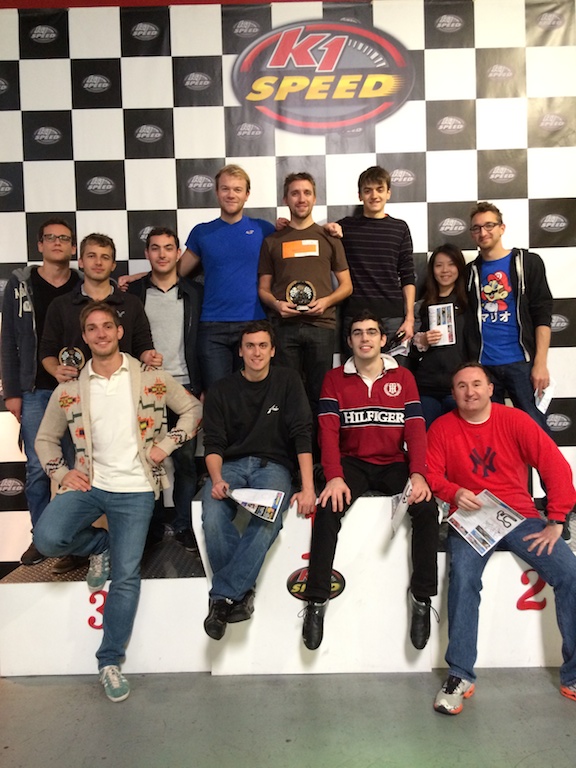
On November 9th was organized the first Grand-prix-Gadz of the San Francisco Bay area. As we are in the Silicon Valley, we were lucky to drive some very high tech electric Go-karts! Not that noisy and surprisingly powerful! All the go-karts we ran on were on a remote safety control system that we experienced quite a bit during tumultuous spinouts…

After some trials, we ran a round of qualification to determine the order on the stating line. It was time for the very challanging grand prix, and everyone wanted to go back home with the Zident-Kart award !
We had a lot of fun and were glad to let Adrien Monvoisin Cl 204, who organized the event, win the race... Actually, he let us lose and was obviously more trained than most of us, his title is well deserved and we all hope to challenge him very soon!
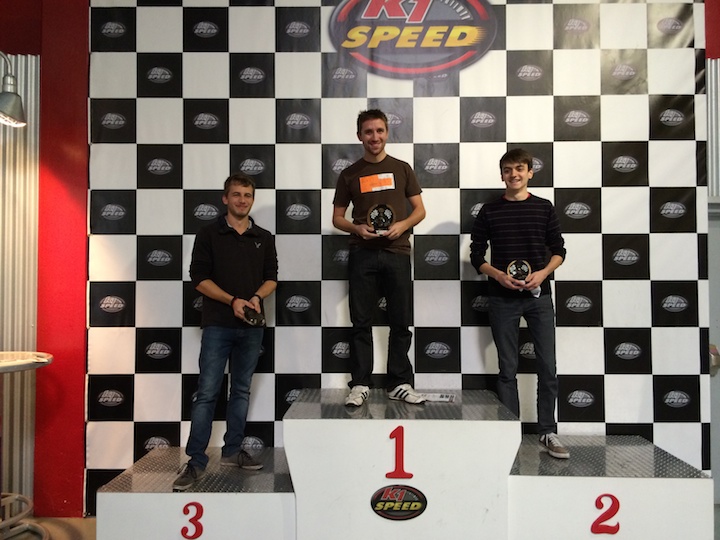
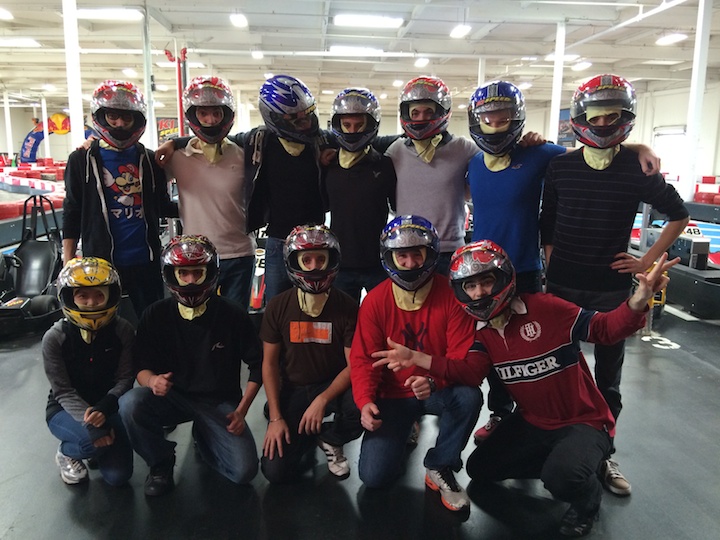
- Details
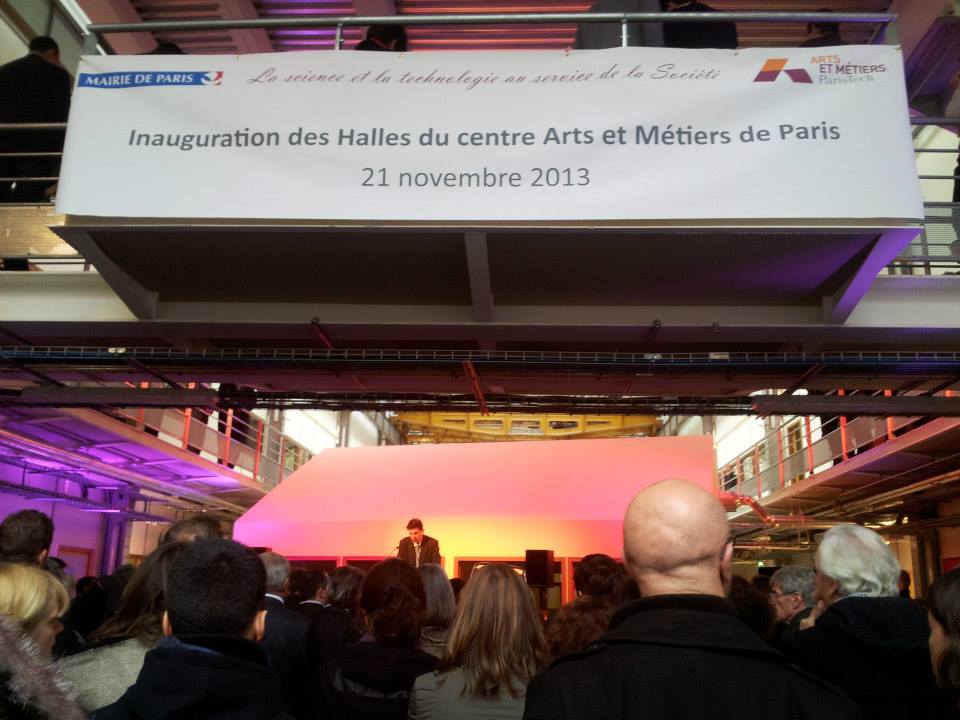
ENSAM Director Laurent Carraro delivers his grand reopening speech
On November 21 2013, Laurent Carraro, Director of Arts et Métiers ParisTech and Eric Savattero, Director of the Paris Center, rededicated the two recently renovated laboratories, Laboratoire Bioméchanique (LBM) and the Laboratoire Conception de Produit et Innovation (LCPI).
Begun in 2010, by architect Patrick Mauger Cabinet, the main objective of the the renovation for the two labs was to increase the space available to students and researchers required for academic instruction as well as research.
Both laboratories have ties to the USA, sharing in research projects and exchanges with NYU, Mayo Clinic, Harvard Medical School, and MIT.
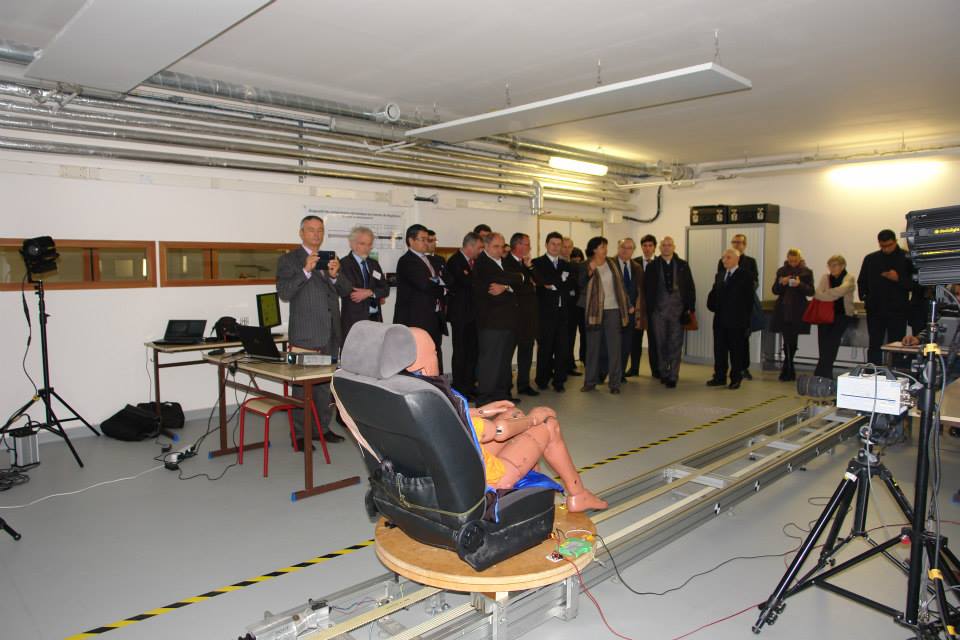 |
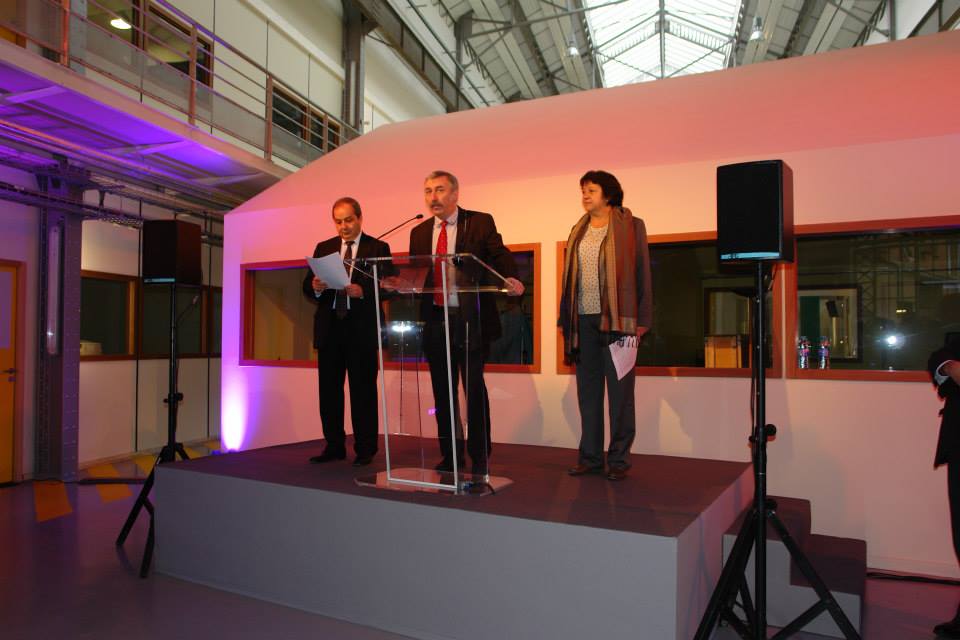 |
| Biomechanical Lab- crash-test room | Améziane Aoussat, LCPI Director, Eric Savattero, Director of Paris Center, Wafa Skalli, LBM Director |
More about the Laboratory of Biomechanics
2000 m2 renovated facilities are fully dedicated to research in neuro-musculo-skeletal biomechanics. The associated technological platform comprises a unique combination of:
• In vitro biomechanical analysis equipment for joint and tissue characterization, and for the design and evaluation of surgical techniques and innovative implants, including an experimental surgery room and static or dynamic testing devices.
• Quantitative in vivo functional analysis, including the EOS system, gait lab, ultrasound elastography device, …
• Software platform for biomedical modeling and medical imaging
This site has been designed as a scientific hub for reinforcement of education and research links between clinicians, engineers and industry, with a common aim of "better understanding to better innovate, to the service of patients and society”
The announcement of the creation of the “Georges Charpak Human Biomechanics Institute" pays tribute to this brilliant scientist with great humanity who was, together with the Biomechanics Laboratory, the Saint Vincent de Paul hospital and the EOS Imaging Society, at the heart of the design of the EOS System, which constitutes a genuine revolution in low dose 3D imaging of the skeleton.
The signing of a partnership agreement with the ‘Public Hospitals of Paris’ organisation marks a strong commitment toward reinforcing synergies and pooling of resources.
With these new facilities, Arts et Métiers ParisTech is structured to achieve the goal of contributing to 21st century medical technology.
For more information:
Press Release- en français
Biomechanical Lab - en français
Product Design & Innovation Lab- English
- Details
Diplôme d'ingénieur recognized as master's degree in engineering
Standards in the higher education industry have normally validated the diplôme d'ingénieur as the equivalent to a Bachelor's of Science in American universities and higher education institutions. This presented several obstacles for students trying to have an academic exchange at the graduate level in the USA and for recent graduates looking to begin their career in positions asking for a minimum qualification of a master's degree.
In the past, Arts et Métiers ParisTech had to reach out individually to each American university to validate the level of ENSAM students at a master's level, in order for the students to be admitted at the master's degree level.
This may no longer be necessary thanks to a new discussion about the requirement and US equivalent of the diplome d'ingenier.
In 2012 two influential organizations were involed in the discussion and revision of the equivalent to the diplome d'ingenieur:
-
The American Association of Collegiate Registrars and Admissions Officers (AACRAO) is a professional membership organization that tasks itself with validating, translating, and admitting higher education credits, degrees, and enrollment.
-
CAMPUSFRANCE, the French national agency that promotes international student mobility to French higher education institutions.
Revisiting the length of study, European Credits (with the equivalent US semster hours) allowed for this new placement recommendation.
Following the new dialogue between AACRAO and CAMPUSFRANCE, in 2013 the International Education Standards Council (IESC) used this information to change the credential advice for the diplome d'ingenieur to the "attainment of a level of education comparable to a master’s degree in engineering in the United States."
More information:
Source: [In French] - Higher Education Accord
- Details
From time to time we feature a member of our US based alumni community. We hope this serves as a way to stay in touch and get to know one another despite the grand size of the US.
Alumnus and AFAM board member Claude Leglise (AN 74) is our next AFAM member profile.
Thank you Claudefor sharing with us!
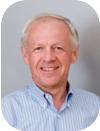
1. Tell us about your career path and area of expertise today. How did it come about?
I had a 23-year career at Intel riding the growth wave of the PC industry in three phases: first in marketing, then in general management, finally in venture capital. In 2007, I started a solar electricity services company with a long-time friend of mine. Today, I split my time between several activities: the solar company that is still operating, innovation management consulting for research institutions, a directorship of a public semiconductor company, and advisory jobs for several start-ups. I am also trying to start a cancer research center in China.
2. What do you do every day at work? How does being a Gadz’Arts help you in your everyday tasks and team management?
As you can guess from my various jobs, there is never a typical day. I jump around between tasks; it is really a lot like the Gadz’Arts training where I learned about pumps, computers, foundry and pre-stressed concrete. Having a generalist’s education allows me to get involved in many different domains, and also to recognize when I need to hire experts.
3. How did you come to the US- why and when? How is your work life different than in France?
I came to the US two years after graduating from A&M to go to business school at Stanford, and I never went back. With a degree in engineering and one in business, it was easy to find a job in Silicon Valley. I did not work in France long enough to know for sure how different things are. Here I enjoy the freedom and the trust employers give employees, in particular the much lower importance of the school and the degree one has attended, and the focus on results. Of course, with Silicon Valley at the center of the computer and communications revolution of the past 30 years, I could not have the jobs I had if I had remained in France.
4. What is the best advice someone ever gave you? Why?
In the mid-90s, I wanted to start a new Intel activity to work with the software industry, and I was being cautious about goals and spending. Andy Grove, who was the CEO, told me: “I would rather have you spend $50M and win, than spend $40M and finish second.” This is a lesson I have applied ever since, in my business and personal life.
5. What is one favorite way to spend your free time (hobbies, weekend activities)?
When I don’t race Porsches with the local club, I spend time on my garden railroad (which by the way leverages most of my Gadz’Arts skills). I also enjoy traveling and photography. In our spare time, my wife and I are learning Chinese.
Thank you again to Claude for sharing his experience and thoughts on life in the USA for Gadz'Arts! AFAM is grateful for your support.

 BLOG /
BLOG /  CALENDAR /
CALENDAR /  DONATIONS /
DONATIONS /  MENTORS /
MENTORS /